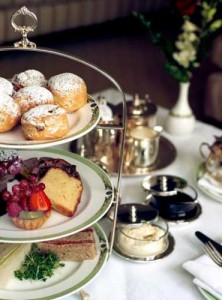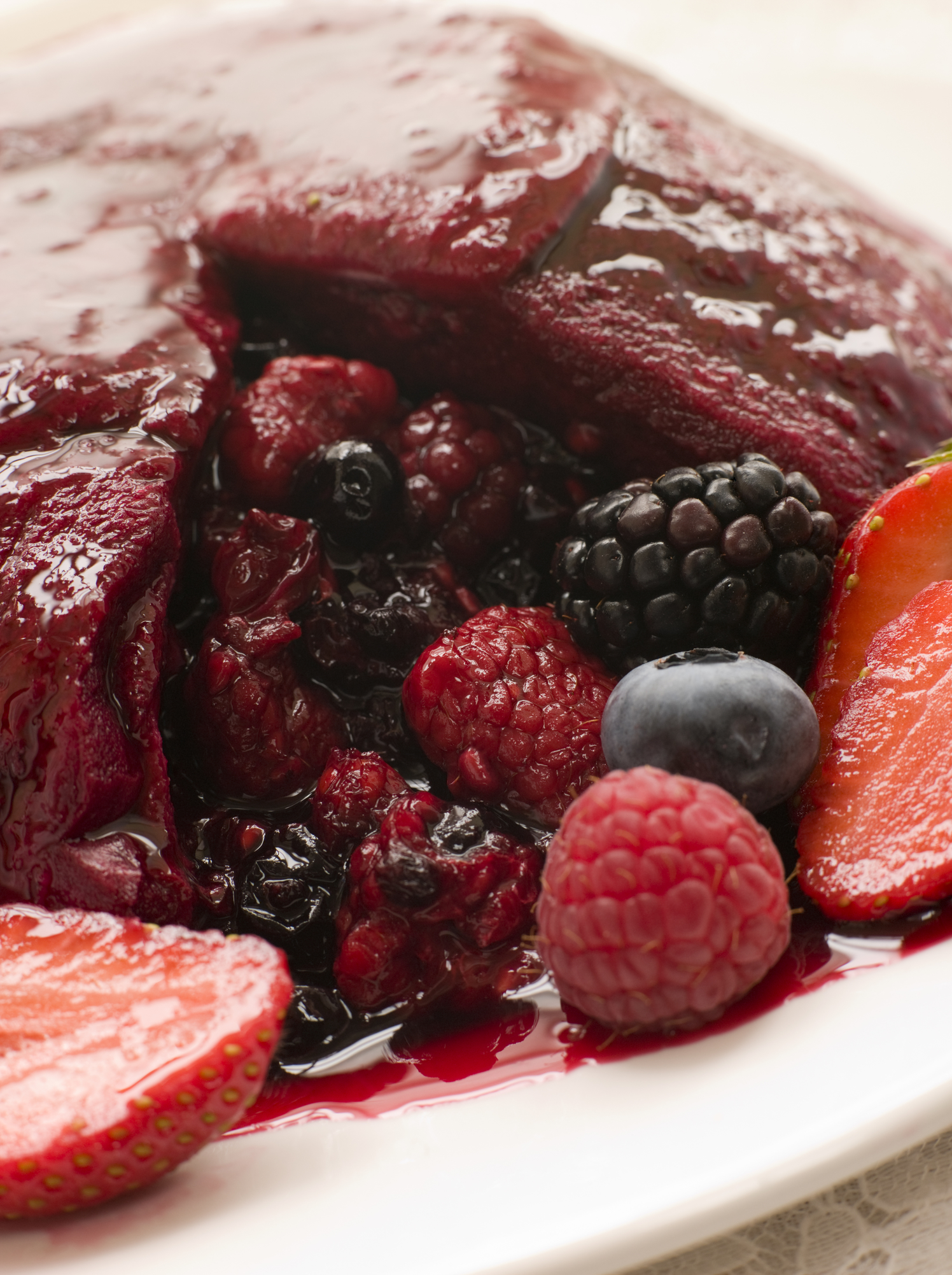You could just drink a cup of Tetley with a packet of Krimpets on the side. Or … you could settle down to a steaming china cup of oolong, accompanied by dainty sandwiches, lemon curd tartlettes and sweet, crumbly scones and strawberry jam.
Which sounds more relaxing to you?
Clearly, there’s more to the civilized repast called “tea” than just tea. Having tea, the meal, is an opportunity to sit and quietly exchange gossip with friends and to nosh on all the neat little treats at a leisurely pace.
All of which makes tea so very appealing, according to well-known cookbook author Margaret M. Johnson, whose latest offering, “Tea & Crumpets” (Chronicle Books, $13.57 on Amazon) documents the history and customs associated with the meal. She also serves up a treasure trove of recipes for tarts, breads, cakes, scones, sandwiches and savories, from many of Europe’s finest tea rooms.
There are recipes from England, of course, which claims to have invented tea. (As witness Johnson’s story about Anna Maria, seventh duchess of Bedford, who is said to have originated the custom in the 18th century.) But there are recipes, too, from France, Scotland, and, of course, Ireland. (Including a delicious recipe for Teatime Fruitcake, which she has generously consented to share.)
In her travels for “Tea & Crumpets,” Johnson visited many of the better-known spots, including London’s Savoy, the Merrion Hotel in Dublin, Le Jardin d’Hiver in Paris and Edinburgh’s Balmoral Hotel. (Where do we get a job like that?) A few of them stand out as favorites.
“The Shelbourne Hotel in Dublin has always served lovely tea in the Lord Mayor’s Lounge,” she says. The Merrion in Dublin is also quite lovely. (The hotel ‘lobby’ is really a series of three drawing rooms, so it’s quite special.) In London, Brown’s Hotel was just named ‘top tea spot’ for 2009.”
No matter where you have it, to share a tea is to indulge in a bit of quiet refinement that often is missing from other meals. “Participants share the food from the tea stand, so there’s a social aspect to that,” says Johnson. “And because everything is dainty, there’s lots of room for conversation—no cutting meat or asking people to pass the salt.”
No doubt, tea is a departure from our fast-food ways. It can also be something of a mystery, what with cream tea, high tea, afternoon tea and more. Maybe not knowing what to expect has kept you from enjoying one of the great gustatory pleasures.
Let Margaret unravel the mysteries for you.
“Afternoon tea is simply what we all know of as a formal tea, with the three-tiered stand, a selection of sandwiches, pastries, and, of course, tea,” she says. “In many hotel rooms in London, Dublin and elsewhere (Philly, too), you can add a glass of champagne for even more elegance. It comes with an additional cost, naturally! High tea is often confused with afternoon tea and because of the word “high,” is usually thought of as even more elegant. Not so. (High tea is actually more sunstantial, like an early dinner, with savory pies and sausages. It’s also called “meat tea.”) Cream tea is usually simply tea and scones.”
For special occasions, like bridal and baby showers, you can also have it at home. (Which is where “Tea & Crumpets” comes in handy.) And don’t feel, Johnson says, like you need your best silver (assuming you have any). Even the three-tiered stand can be bought on the cheap at a store like Marshalls. Use your own dishes on it, she says—these stands usually are designed to take seven- or nine-inch plates.
Of course, tea is truly special when you have it out. Happily, the Philadelphia area is filled with places where you can indulge. See our tea guide.


